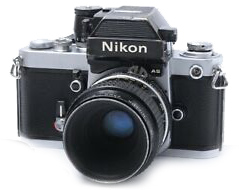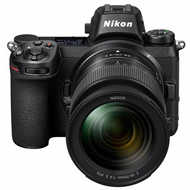Choosing Nikon:
I’ve been shooting photos for a long time, picking up the bug from my Dad who was an avid photographer. He always had a camera in his hands. I started to seriously study black & white film photography in high school, developing my own film & prints. Becoming even more serious in college, I minored in Visual Communications along with Biological Oceanography. In college, I wanted a good camera so I researched the hell out of gear, something I still do. After deliberating over the Canon F1 and Nikon F2, and reviewing the gear my favorite sports photographers & photojournalists used in magazines like National Geographic, Geo, & Life. I decided on the Nikon F2 and I have been a devoted Nikon user ever since.

Photojournalism versus Oceanography:
I’ve always considered myself more of a photojournalist but dabbled in art photography, particularly when completing a class assignment or photographing recreationally. I was torned between wanting to pursue a photography versus a science career, oceanography specifically. So I tried to do both part-time and was not good professionally at either. I managed to win the World Series of Amateur Photography sponsored by Popular Photography Magazine in 1981. The grand prize being a trip for two to Fiji. So I had the eye but was not a good self-promoter. So with finding a steady job in biological oceanography at SIO, the premier West Coast oceanographic institution. A job at the place I dreamt about working since high school. I finally devoted my focus on science & computers. Photography was a useful skill to have in science and with the explosion of social media. I was able to use my photography skills to promote our program on Facebook, Twitter, & Instagram (search for “CalCOFI” on these platforms). As well as having photos used throughout the institution and in publications. It was the right decision since I retired after 35 years in July 2019 with a successful career in oceanography.

Retirement & Photography:
My retirement gift to myself was a Nikon Z6 w/ 24-70mm f4 Z lens. I have all the Nikon glass I’ve accumulated over the years and using the FTZ adapter, I can use it on my Z6. This is my first full-frame digital camera. I’ve also added the Nikon 14-30mm Z wide angle zoom.
Here’s the long list Nikon cameras I’ve used over the years: Nikon FM & FE, Nikon F3, Nikon D100, D200, and D7200. I still own all these cameras except the D100.
Classic Glass: Nikkor 24mm f2, 35mm f2, 50mm f1.8, 55mm macro, 105mm, 180mm f2.8, 80-200mm f4.5. Plus some Nikon DX glass for my D7200, which I picked over the D7500 because it has the auto-focus drive in body, necessary to autofocus my non-AFS lenses. The Nikon D7200 is my second camera, particularly useful when shooting with longer lenses such as my Tamron 150-600mm (225-900mm on APS-C).
Other systems in my arsenal:
Over the years, I’ve used a variety of other film cameras – Hasselblad 500C, Mamiya C330, Calumet 4×5 with Nikkor & Fujinon lenses, plus a variety of point-n-shoots from Canon, Sony, Olympus, Nikon, & Panasonic. I’ve definitely supported the camera industry.
Working on ships, I’ve used GoPros, taking advantage of their ultrawide FOV plus being small & waterproof.
For several years, I used two Sony a6000s, enjoying their compact bodies and excellent APS-C image quality, for travel. For the longest time, the lens selection was limited and many of the good ones, like the Sigma 16mm f1.4, were relatively big & heavy.
So last year, I added micro 4/3 to my travel setup after falling in love with the retro Olympus Pen-F. There is plenty of compact, affordable MFT lenses of great optical quality. Combined with Panasonic MFT bodies – G7 & G85, and the new Olympus OMD EM-1 Mark III. I am ready to travel light & compact, adapting to the limited weight restrictions of many international airlines. Also, the Nikon Z6 full-frame system is also compact so depending on the location, I can choose which gear to pack.
